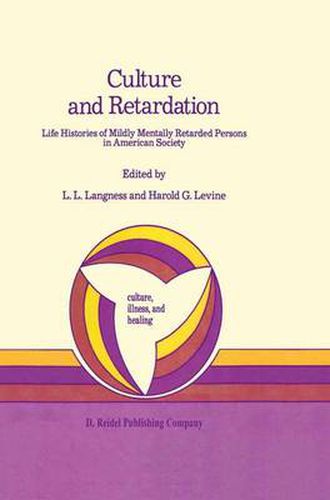Readings Newsletter
Become a Readings Member to make your shopping experience even easier.
Sign in or sign up for free!
You’re not far away from qualifying for FREE standard shipping within Australia
You’ve qualified for FREE standard shipping within Australia
The cart is loading…






This title is printed to order. This book may have been self-published. If so, we cannot guarantee the quality of the content. In the main most books will have gone through the editing process however some may not. We therefore suggest that you be aware of this before ordering this book. If in doubt check either the author or publisher’s details as we are unable to accept any returns unless they are faulty. Please contact us if you have any questions.
Mental retardation in the United States is currently defined as
… signif icantly subaverage general intellectual functioning existing concurrently with deficits in adaptive behavior, and manifested during the development period (Grossman, 1977). Of the estimated six million plus mentally retarded individuals in this country fully 75 to 85% are considered to be func tionally retarded (Edgerton, 1984). That is, they are mildly retarded persons with no evident organic etiology or demonstrable brain pathology. Despite the relatively recent addition of adaptive behavior as a factor in the definition of retardation, 1.0. still remains as the essential diagnostic criterion (Edgerton, 1984: 26). An 1.0. below 70 indicates subaverage functioning. However, even such an objective measure as 1.0. is prob lematic since a variety of data indicate quite clearly that cultural and social factors are at play in decisions about who is to be considered retarded (Edgerton, 1968; Kamin, 1974; Langness, 1982). Thus, it has been known for quite some time that there is a close relationship between socio-economic status and the prevalence of mild mental retardation: higher socio-economic groups have fewer mildly retarded persons than lower groups (Hurley, 1969). Similarly, it is clear that ethnic minorities in the United States - Blacks, Mexican-Americans, American Indians, Puerto Ricans, Hawaiians, and others - are disproportionately represented in the retarded population (Mercer, 1968; Ramey et ai., 1978).
$9.00 standard shipping within Australia
FREE standard shipping within Australia for orders over $100.00
Express & International shipping calculated at checkout
This title is printed to order. This book may have been self-published. If so, we cannot guarantee the quality of the content. In the main most books will have gone through the editing process however some may not. We therefore suggest that you be aware of this before ordering this book. If in doubt check either the author or publisher’s details as we are unable to accept any returns unless they are faulty. Please contact us if you have any questions.
Mental retardation in the United States is currently defined as
… signif icantly subaverage general intellectual functioning existing concurrently with deficits in adaptive behavior, and manifested during the development period (Grossman, 1977). Of the estimated six million plus mentally retarded individuals in this country fully 75 to 85% are considered to be func tionally retarded (Edgerton, 1984). That is, they are mildly retarded persons with no evident organic etiology or demonstrable brain pathology. Despite the relatively recent addition of adaptive behavior as a factor in the definition of retardation, 1.0. still remains as the essential diagnostic criterion (Edgerton, 1984: 26). An 1.0. below 70 indicates subaverage functioning. However, even such an objective measure as 1.0. is prob lematic since a variety of data indicate quite clearly that cultural and social factors are at play in decisions about who is to be considered retarded (Edgerton, 1968; Kamin, 1974; Langness, 1982). Thus, it has been known for quite some time that there is a close relationship between socio-economic status and the prevalence of mild mental retardation: higher socio-economic groups have fewer mildly retarded persons than lower groups (Hurley, 1969). Similarly, it is clear that ethnic minorities in the United States - Blacks, Mexican-Americans, American Indians, Puerto Ricans, Hawaiians, and others - are disproportionately represented in the retarded population (Mercer, 1968; Ramey et ai., 1978).